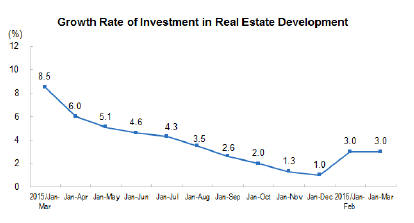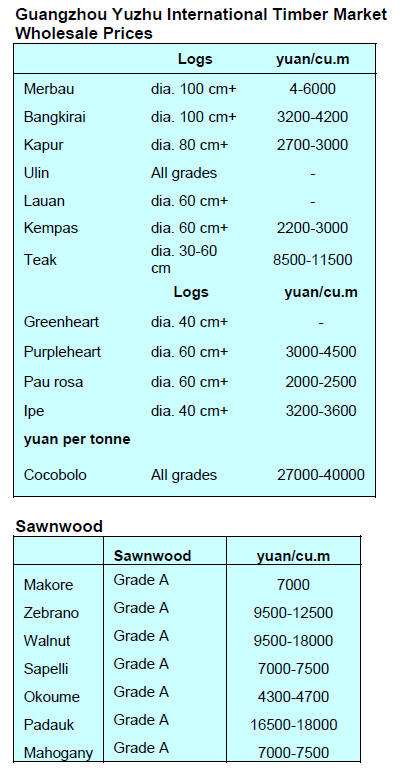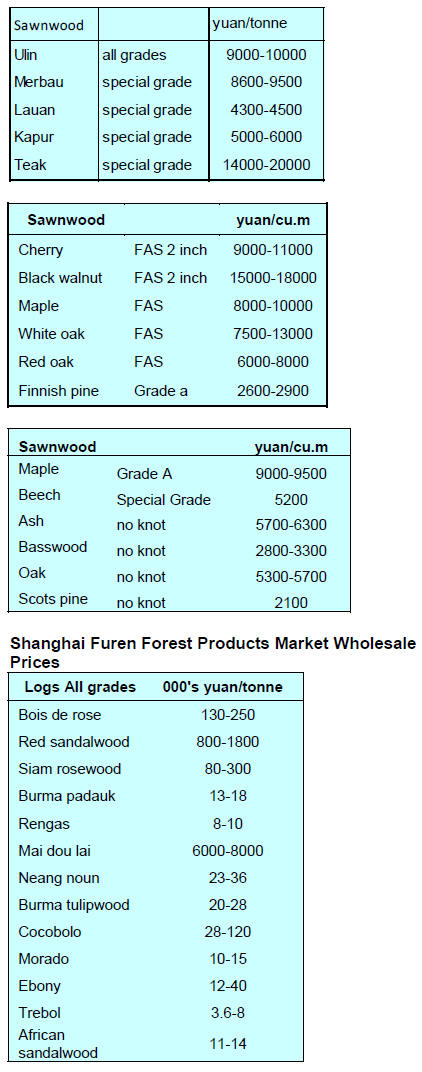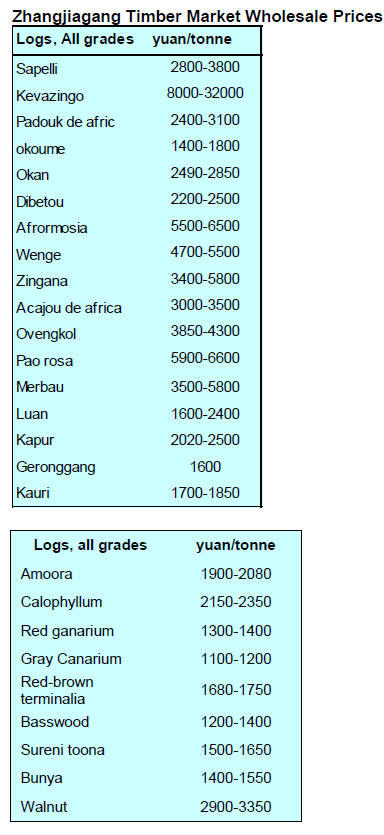US Dollar Exchange Rates of 25th April 2016
China Yuan 6.4888
Report from China
New forest reserves to rebalance supply and demand
It has been reported by the State Forestry Administration
(SFA) that, as part of China¡¯s National Forest Reserve
Construction Planning for 2016 to 2050, six new large
forest reserves will be created.
Reserves will be created in the southeast coastal regions,
in the middle and lower reaches of the Yangtze River, on
the Huang Huai Hai plain and in the southwest, Beijing,
Tianjin and Hebei Provinces. A further reserve will be
created in the Northeast.
When completed the area of national reserves will extend
to 14 million hectares and it is forecast that around 95
million cubic metres of logs can be sourced from national
forests gradually rebalancing domestic supply and
demand.
Promoting quake resistant wooden buildings
The Chinese government recently announced policies to
encourage the development of wooden low rise public
buildings in earthquake prone areas. Currently most of
China¡¯s new buildings are of reinforced concrete with only
a small proportion of wooden structures.
Those wooden building that have been constructed are
mainly residential homes (45%) tourist accommodation
(31%) with only a small proportion being public buildings.
The country is developing standards for medium and high
rise wooden structures and domestic enterprises are
preparing to build high rise cross-laminated timber (CLT)
buildings. Analysts say there will be a big market for
wooden homes and buildings in quake prone rural areas.
Industrial wood processing zone in Shandong
According to the Shandong Inspection and Quarantine
Bureau, timber imports through Shandong have increased
in recent years. Timber imports via Shandong province in
2015 totalled over 10 million cubic metres, accounting for
one sixth of the national total.
Lanshan, Huangdao, Dongjiakou, Penglai Ports are the
main ports handling timber in Shandong provinces. The
rise in timber imports has contributed to the development
of service and downstream industries in the province.
It has been reported that RMB10 billion will be invested in
a new international wood processing zone near
Dongjiakou Port. An area of 500 hectares has been
identified and it is planned that the zone can handle around
4 million cubic metres of timber. This zone will become
an important timber trade and processing base in the
province.
Brazilian eucalyptus logs imports
It has been reported that a trial shipment of eucalyptus
logs from Brazil has arrived in Liaocheng City, Shangdon
Province. It is estimated that the major wood processing
plants in Liaocheng City use around 1 million cubic
metres of imported logs to produce plywood and veneer
and the imported eucalyptus will be assessed for plywood
production.
Trial international timber warehousing and distribution
centre
A trial is underway at the Manzhouli Irito Logistics
Limited (IRITO) international timber warehousing and
distribution centre termed Manzhouli IRITO. This is an
international railway logistics and industrial park in
Manzhouli.
At present, the management of the centre is applying to
become a bonded logistics centre. The centre can
accommodate around half a million cubic metres and
operations at the centre will act to stabilise market prices
and reduce transaction costs and risks for enterprises.
Shipping containers can be directly packed in the yard to
improve efficiency and lower costs.
CITES asked for two month grace period for ambila
imports
China¡¯s National Management Office for Endangered
Species has appealed to CITES regarding the resolution
adding Pterocarpus erinaceus Poir into CITES Appendix
III. This timber is known as ambila in China, other names
include bani, tolo and ban.
China has requested a 2 month grace period before fulfill
the resolution. This would allow the import of the species
without a CITES certificate but with a bill of lading and
certificate of origin.
House prices and the challenging market
The National Bureau of Statistics has released data for
March prices for residential buildings based on its regular
survey across 70 medium and large-sized cities.
The data shows that in the major cities prices surged as
much as 60% during the first 3 months of this year. In
sharp contrast prices in the so-called lower-tier cities
prices continue to fall.
Year on year prices for newly constructed residential
buildings fell in 29 cities, increased in 40 and remained
unchanged in 1. Compared year on year March 2016
prices of second-hand homes fell in 23 cities, increased in
46 and were unchanged in just 1 city. Year-on-year price
rises for second hand homes topped 60%.
For more see:
http://www.stats.gov.cn/english/PressRelease/201604/t20160418
_1345163.html
The oddest thing about the housing market is that prices
are rising even though the country as a whole has a surplus
of housing, the result of the 2013 construction boom.
Many companies are finding it hard to sell properties, it is
all a matter of location. Selling has become tougher
because of a tightening of rules on loans and
down payments aimed at cooling the market and the
general slowdown in economic growth.
The National Bureau of statistics says total investment in
real estate development in the first three months of 2016
was up 6% year-on-year of which investment in residential
buildings was up by almost 5%.

See:
http://www.stats.gov.cn/english/PressRelease/201604/t20160418
_1345154.html

 
|